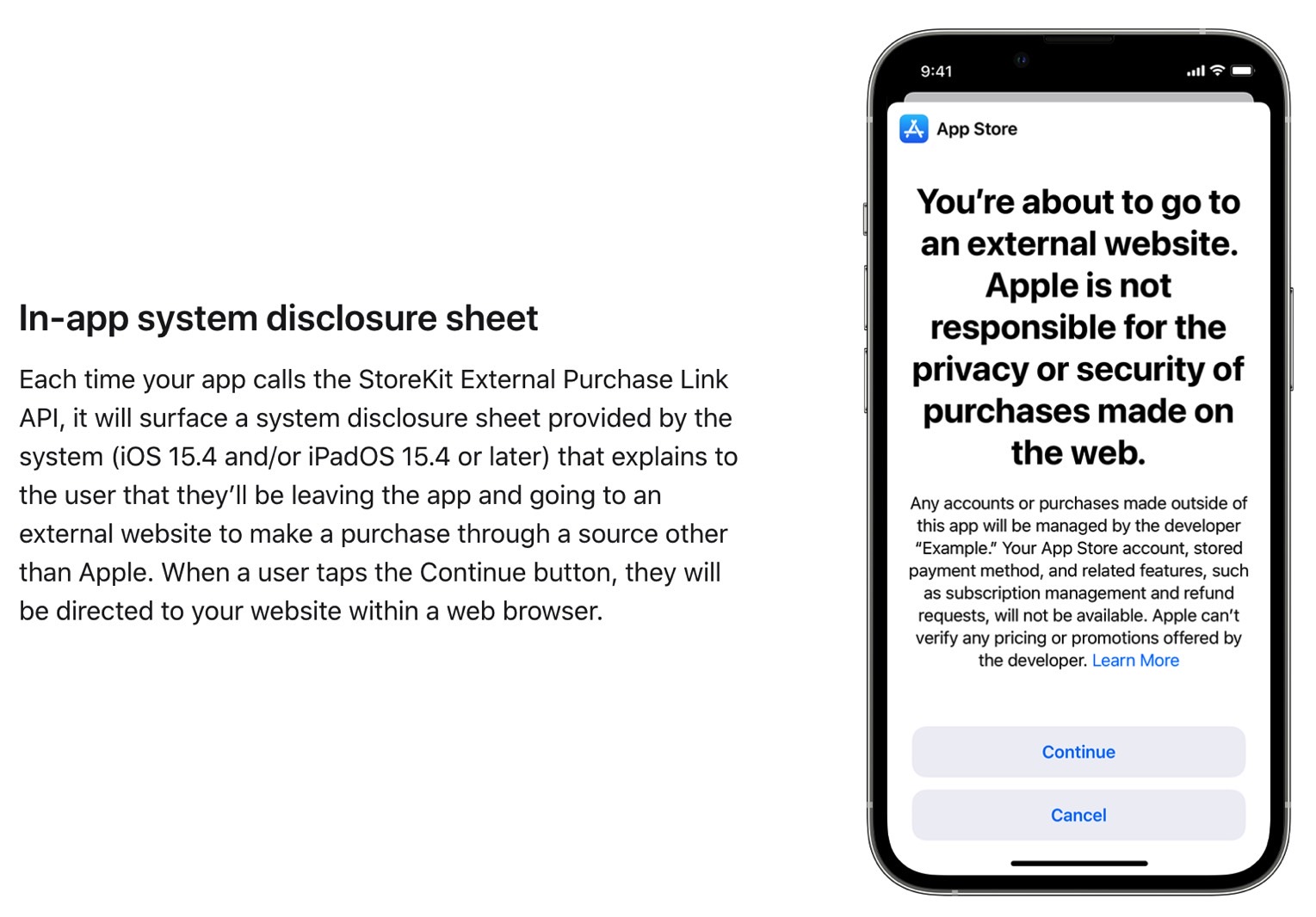It’s official: Apple will support third-party payments for iPhone apps in the US. But it’s not as good as it sounds for developers or app buyers. Apps won’t be cheaper now that developers can charge for digital content on their websites due to Apple’s fees.
Apple will still collect 27% or 12% fees from iPhone apps instead of the current 30% and 15%. Also, it’s up to the developer to report earnings to Apple and worry about customer support and payment security. As a longtime iPhone user, I’ll keep paying for digital content in the App Store via Apple, even if I’m paying that 30% fee.
There is a simple way for iPhone users to buy cheaper apps. And developers can implement everything with ease. I’ll describe the process below, but I’ll warn you before we get there that it probably won’t work because of human nature.
How the 27% fee works
Apple has a new support document for developers that explains how they can add links in apps to their websites and how they can process payments for digital content. I’ll draw your attention to the following paragraph that details what transactions Apple will commission:
Apple is charging a commission on digital purchases initiated within seven days from link out, as described below. This will not capture all transactions that Apple has facilitated through the App Store, but is a reasonable means to account for the substantial value Apple provides developers, including in facilitating linked transactions.
That’s actually a big deal. Any iPhone app purchases made on a developer’s website seven days after the user clicks on a link in the app to said website will not be subject to the 27% or 12% tax.
Developers can offer cheaper apps and subscriptions outside of the App Store. In turn, buyers can purchase cheaper digital content. But only as long as both parties do the 7-day dance. I’ll explain below.

What developers have to do
Say you placed a link to your website like the ones Apple allows (see above). You should then create a landing page that tells the users they can buy the app or subscription right now and pay roughly the same price as the App Store or wait 7 days and get a discount.
You can choose what savings to pass on to the customer. You’ll have to pay for the fees your payment processor demands, and all the customer support side of business you’ll have to handle for these sales. And you might want to keep some of that 27% for yourself. But after 7 days, you can sell your app for a better price.
The problem is ensuring the buyer goes through with the purchase. You could tweak that landing page to have a registration form that will let you send emails to the buyer once the 7-day window has closed. You can also add a link that places a reminder on the users’ calendar 7 days from the click.
What buyers have to do
You’re an iPhone/iPad owner who wants to buy an app or in-app content on your device, and you see the developer’s link that informs you better prices are available on their website.
You click that link, and then you’re invited to a page that lets you pay for the app immediately or in 7 days. You should just save the landing page in your browser, and return after 7 days to get the cheaper price. Set a calendar reminder, and get back to the browser tab that you just saved.
It’s critical you don’t return to the app and press that external link again. It would probably trigger another 7-day wait window.

Why it won’t work
As you can see, there is a way to get cheaper apps, but it involves more work. Both from the developer, who has to create all these information pages and the buyer, who has to wait.
I’ll address the waiting part first. It won’t happen. If you’ve convinced me to buy an app or in-app content on the iPhone, I don’t just want it now. I want it yesterday. I’ll buy it right then and there. I’ll absolutely not wait for 7 days. And if I somehow manage to wait that long, I might forget about it. Or, god forbid, click the app link and then go through this whole thing again.
For developers, securing a sale for generally the same price as the App Store is extra work. That is if you want to pay most of the 30% savings to the buyers. I doubt it’ll be the case with many developers. It’s not about greed. Developers will have to pay for transaction fees now. And they’ll have to invest in customer support.
I also can see a scenario where some developers will want to keep a lot of that 27% fee or all of it for themselves. If they somehow manage to convince buyers to pay for their apps 7 days after a click on the iPhone.
Could Apple make it easier for everyone? Yes, it could. It could allow iPhone sideloading, third-party app stores, and third-party payments worldwide and be done with the PR nightmare. I’m sure many, like me, would choose the Apple way. But Apple will continue this unnecessary fight for as long as it can.
The good news is that we’ll soon see what an iPhone with sideloading support looks like, thanks to the EU’s Digital Markets Act (DMA). Apple has to enable the feature in the first week of March.








